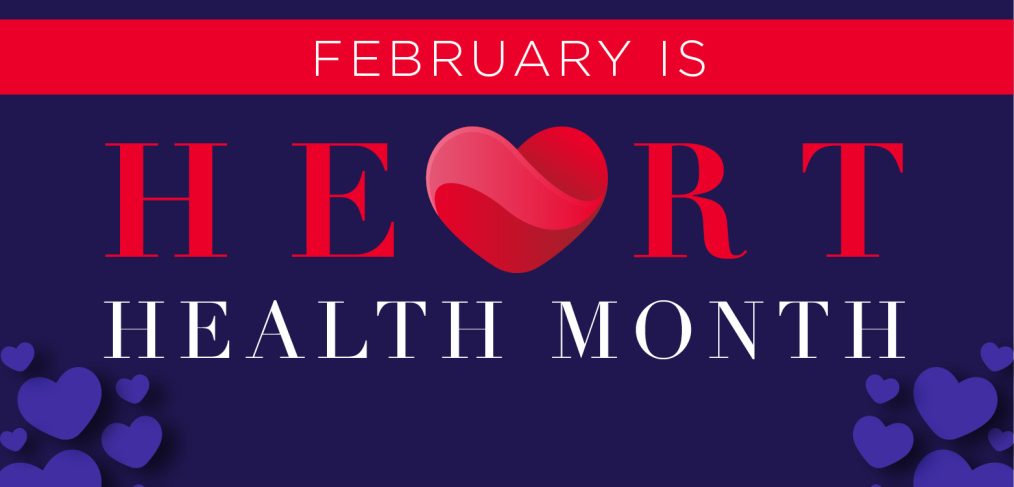
February is Heart Health Month: Give your heart some love
Hearth disease and stroke are the main causes of deaths in the United States, but the good news is that you can do a lot to prevent developing either.
Several health conditions, your lifestyle, and your age and family history can increase your risk for heart disease. According to the Centers for Disease Control and Prevention, about half of all Americans (47%) have at least one of three key risk factors for heart disease: high blood pressure, high cholesterol, and obesity. Other factors like smoking also contribute to heart disease.
Making changes to your lifestyle, according to the CDC, can contribute to reducing the risk of hypertension and the resulting heart disease.
Your diet
Choose healthy meals and snacks to help prevent heart disease and its complications. Be sure to eat plenty of fresh fruits and vegetables and fewer processed foods. Eating lots of foods high in saturated fat and trans fat may contribute to heart disease. Eating foods high in fiber and low in saturated fats, trans fat, and cholesterol can help prevent high cholesterol. Limiting salt, sugar and alcohol in your diet can also lower your blood pressure. Learn more about healthy diet and nutrition at CDC’s Nutrition, Physical Activity, and Obesity website.
Maintain a healthy weight
People with overweight or obesity have a higher risk for heart disease. Carrying extra weight can put extra stress on the heart and blood vessels. To find out if your weight is in a healthy range, you can calculate your Body Mass Index (BMI) at CDC’s Assessing Your Weight website.
Include regular physical activity
Physical activity can help you maintain a healthy weight and lower your blood pressure, blood cholesterol, and blood sugar levels. For adults, the Surgeon General recommends 2 hours and 30 minutes of moderate-intensity exercise, like brisk walking or bicycling, every week. Children and adolescents should get 1 hour of physical activity every day. For more information, see CDC’s Nutrition, Physical Activity, and Obesity website.
Facts About Hypertension*
In 2017, the American College of Cardiology and the American Heart Association published new guidelines for hypertension management and defined high hypertension as a blood pressure at or above 130/80 mmHg. Stage 2 hypertension is defined as a blood pressure at or above 140/90 mmHg.
| Blood Pressure Category | Systolic Blood Pressure | Diastolic Blood Pressure | |
| Normal | <120 mmHg | and | <80 mmHg |
| Elevated | 120-129 mmHg | and | <80 mmHg |
| Hypertension | |||
| Stage 1 | 130-139 mmHg | or | 80-89 mmHg |
| Stage 2 | ≥140 mmHg | or | ≥90 mmHg |
- In 2019, more than half a million deaths in the United States had hypertension as a primary or contributing cause.
- Nearly half of adults in the United States (47%, or 116 million) have hypertension, defined as a systolic blood pressure greater than 130 mmHg or a diastolic blood pressure greater than 80 mmHg or are taking medication for hypertension.
- Only about 1 in 4 adults (24%) with hypertension have their condition under control.
- About half of adults (45%) with uncontrolled hypertension have a blood pressure of 140/90 mmHg or higher. This includes 37 million U.S. adults.
- About 34 million adults who are recommended to take medication may need it to be prescribed and to start taking it. Almost two out of three of this group (19 million) have a blood pressure of 140/90 mmHg or higher.
- High blood pressure was a primary or contributing cause of death for 516,955 people in the United States in 2019.
- High blood pressure costs the United States about $131 billion each year, averaged over 12 years from 2003 to 2014.
*Source: Centers for Disease Control and Prevention



